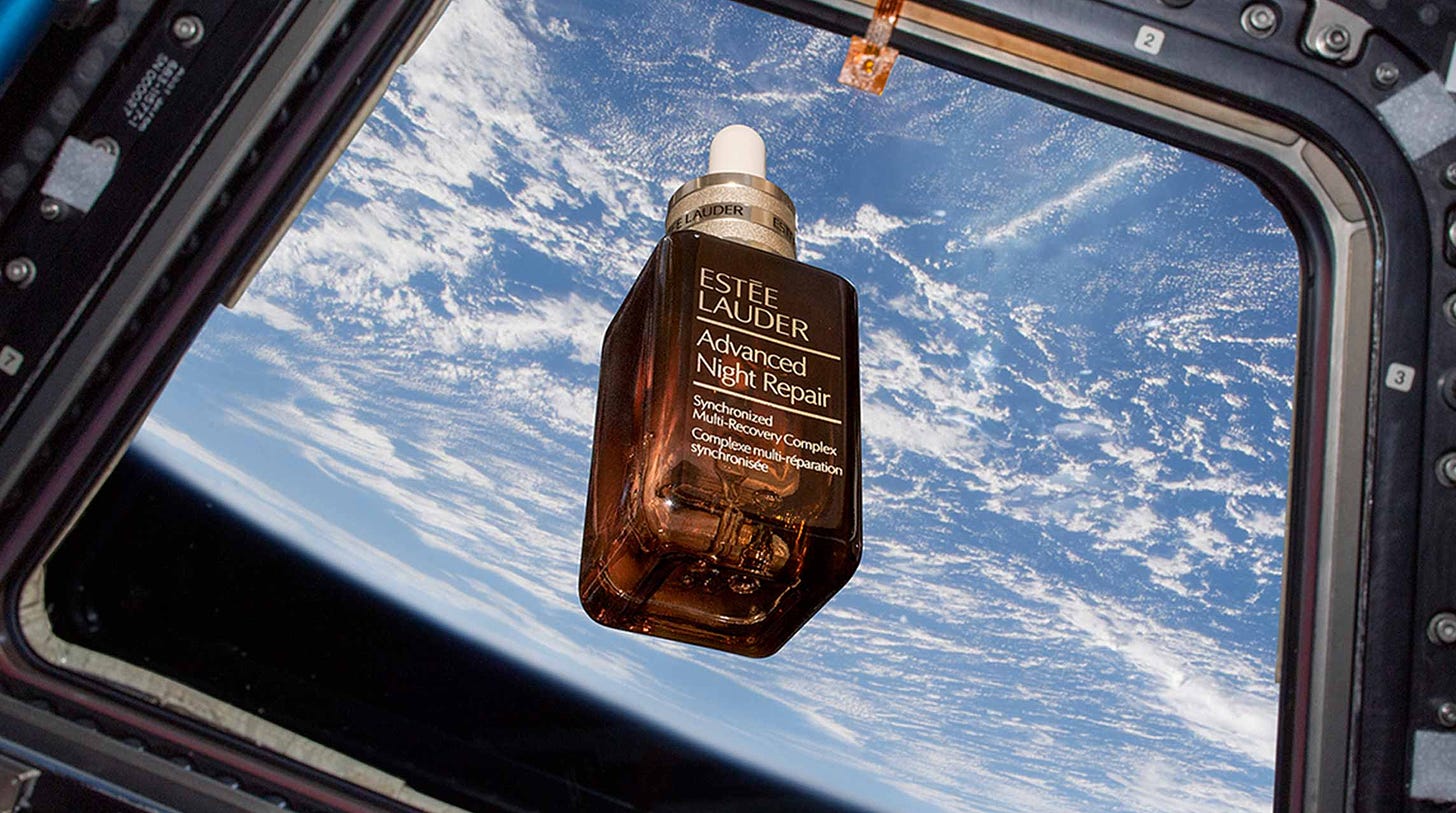Launch Estée Lauder Into Space
The cosmetics corporation takes eco-inspiration from... Jeff Bezos?
In July, Amazon founder and unethical billionaire Jeff Bezos rode a dick-shaped rocket into space and returned to Earth with an idea. “We need to take all heavy industry, all polluting industry, and move it into space and keep Earth as this beautiful gem of a planet that it is,” he said. Everyone had a big ol’ laugh at his expense, because that is not how sustainability works, my guy! Everyone, that is, except the people at Estée Lauder.
“To tackle the beauty industry’s plastic waste problem, Estée Lauder is looking for solutions in outer space,” industry publication Glossy reported today, noting that the company will provide the International Space Station National Lab with $1 million in funding. Estée Lauder’s global brand president Stéphane de La Faverie explained, “We hope that the research will ultimately lead to the development of broad-use biopolymers or plastics alternatives that can translate to many industries, including the beauty industry.”
Ahem. Estée, baby. Listen to me. There’s a much more accessible, effective way for you to reduce plastic pollution — one that will have an impact on the planet now rather than, like, a decade from now, at which point we’ll pretty much be out of time, anyway:
STOP SELLING SO MANY SILLY LITTLE PRODUCTS!!!
I don’t know how to make this any clearer. You cannot effectively address climate change by producing plastic alternatives if you don’t also stop producing/consuming the stuff you want to squirt into those plastic alternatives at an unsustainable rate.
Sustainability isn’t a material. It’s a mindset. And the mindset at Estée Lauder Companies — the parent company that owns Estée Lauder as well as MAC Cosmetics, GLAMGLOW, Tom Ford Beauty, La Mer, Clinique, Dr. Jart, and lots of other beauty brands — is decidedly unsustainable.
See:
Estée Lauder’s Perfectionist Pro Serum, which promotes an impossible beauty ideal in name and features a whopping 88 ingredients in every 1.7 ounce bottle, including fossil-fuel-derived petrochemicals and potentially-bioaccumulative silicones.
GLAMGLOW’s #GlitterMask GravityMud Firming Treatment, a sparkly face mask that is likely to damage your face, but which ELC sells anyway for its selfie-potential — “selfie-potential” being free, consumer-generated content that inspires the sale of more face-damaging face masks.
Tom Ford Beauty’s Créme Concentrate, a jar of petrolatum and hydrogenated vegetable oil that sells for $450 and admittedly approximates the moisturizing effect of $1 tea bags.
Estée Lauder’s Advanced Night Repair, a sad soup of PEGs and anti-aging propaganda that sells 22 times a minute. 31,680 times a day. A million times a month!
It really doesn’t really matter if these products are packaged in space-tastic alternative plastics — it’s the ideology behind them that’s screwing the planet.
So why bother investing in space-tastic alternative plastics at all? The full statement from de La Faverie holds a clue: “This ISS National Lab Sustainability Challenge partnership allows us to accelerate our sustainability agenda further.” Not sustainability. Sustainability agenda. Because that’s what giant corporations seem to think sustainability is: an agenda. A marketing tactic. A media talking point. A consumer-facing coverup that makes people feel better about buying unsustainable products at an unsustainable rate because hey! Estée Lauder is funding eco-research! I can feel proud of my purchase without investigating its actual impact!

To be fair, I’m sure the “broad-use biopolymers” and “plastics alternatives” that come out of this Lauder-funded outer space research will be lovely and wonderful and helpful across industries.
It’s just that there are better solutions right here on Earth.




